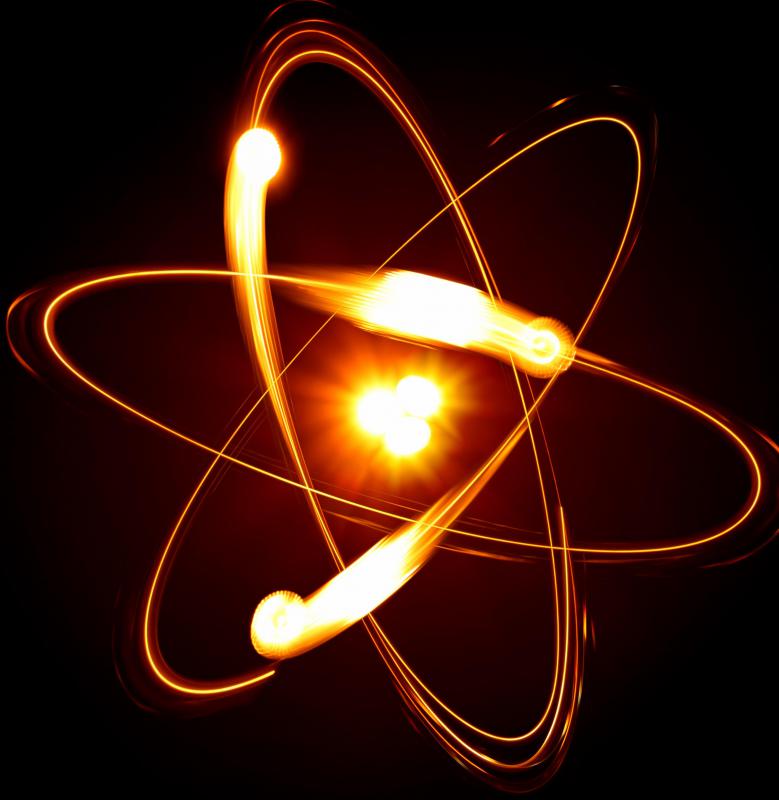At WiseGEEK, we're committed to delivering accurate, trustworthy information. Our expert-authored content is rigorously fact-checked and sourced from credible authorities. Discover how we uphold the highest standards in providing you with reliable knowledge.
What Types of Nuclear Reactors Exist?
Nuclear reactors can be classified in several different ways: by the type of nuclear reaction, the moderator material used, coolant used, generation of the reactor, fuel phase, fuel type, and use. Counting research reactors, thousands exist worldwide, falling into many different categories. In this article I'll go over the classification schemes of nuclear reactors one at a time.
In this article we are only looking at fission nuclear reactors, that is, reactors that break apart nuclei, rather than fusion reactors, which fuse them together. Fusion reactors are still a highly experimental technology in the early development stages, while fission reactors have been in use for over 60 years.

The type of nuclear reaction generally refers to whether the nuclear reactor uses slow (thermal) neutrons or fast neutrons. Most reactors employing fast neutrons fall into the fast breeder reactor category, while most using slow neutrons are called thermal reactors. Thermal reactors are the cheapest and most common, mostly because they can use natural, unenriched uranium. The neutrons in thermal reactors are referred to as "slow" because the reactor uses a moderating material to decelerate the neutrons from their natural speed when ejected from broken atomic nuclei, which is quite fast, closer to the speed and heat of the surrounding fuel medium. Fast neutron reactors are more expensive and require the fuel to be more enriched, making them less popular. On the other hand, they create more fuel than they consume, making them attractive for the longer term.

Moderator material is the second classification scheme for nuclear reactors. As stated before, only thermal nuclear reactors use moderators, so this only covers those. Graphite, heavy water, and normal water are all used as moderators. Graphite and heavy water reactors are more popular because these moderating materials thermalize the neutrons better, ensuring that natural uranium can be used and no enrichment is needed.
The next classification scheme is based on generation. Generation I reactors were the first prototype reactors, typically one of a kind. Generation II reactors were made for commercial use, and based on standard designs. These came into use during the 50s. Generation III reactors are more modern, coming into use in the late 90s. They are more lightweight and efficient than the previous generation. The newest generation, Generation IV reactors, are currently in the research stage and not expected to be rolled out until the late 2020s or early 2030s. These reactors will be very economical and produce minimal waste.
Another type of classification is fuel phase - liquid, solid, or gas. Solid is most typical. Along with phase comes the type of fuel - uranium or thorium. These are the only two reactor-ready elements available in substantial quantities on Earth.
The last classification is based on use - for power plants, propulsion, the production of nuclear fuel (breeder reactors), or research reactors. Radioisotope thermoelectric generators (RTG) are also sometimes thrown in with nuclear reactors, although they are somewhat different. RTGs generate energy from the decay of a radioactive isotope.
And that's it. There are more specific ways of characterizing nuclear reactors, and numerous designs at various stages of development, but the amount of written material on nuclear reactor types could probably fill a small library.
AS FEATURED ON:
AS FEATURED ON:












Discussion Comments
@Comparables- I read the specs on some of the modular reactors that are in various stages of development, and I could see those being the future of nuclear power generation. Some are more like nuclear batteries, generating power for thirty years before the fuel cartridge is removed for disposal or storage. Many of the new reactors also use thorium, or minimally enriched uranium as a fuel source. These new small and very small reactors require less planning of nuclear reactor sites, can be completely buried, and can often be expanded to meet the growing needs of small power grids. My hat goes off to all the brilliant minds that come up with this stuff.
I read an article recently about small modular nuclear reactors that were melt-down proof and proliferation proof, making them suitable for developing nations that may not have the institutional capacity to support a large nuclear energy industry. They are also good for powering large industrial areas like mines or desalination plants, and they are very safe.
Toshiba makes the reactor, and it is working its way through the approval process. Once it receives government approval, the reactor will be in operation in Alaska.
This was a very informative article. I never knew there were so many nuclear reactor designs. I wonder which of these types of nuclear reactors is the safest. Nuclear reactor safety is likely going to be a big issue in the coming months and years considering the disaster unfolding in Japan.
Post your comments